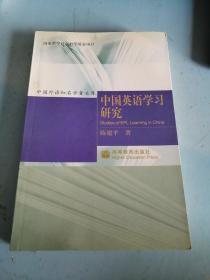
中国英语学习研究
¥ 5 1.5折 ¥ 33.5 九品
仅1件
河南郑州
认证卖家担保交易快速发货售后保障
作者陈建平 著
出版社高等教育出版社
出版时间2005-12
版次1
装帧平装
上书时间2022-10-27
- 最新上架
商品详情
- 品相描述:九品
图书标准信息
- 作者 陈建平 著
- 出版社 高等教育出版社
- 出版时间 2005-12
- 版次 1
- ISBN 9787040185096
- 定价 33.50元
- 装帧 平装
- 开本 16开
- 纸张 胶版纸
- 页数 350页
- 字数 450千字
- 正文语种 英语
- 【内容简介】
-
《中国英语学习研究》的价值在于它的宏观性,即作者高屋建瓴,充分论述了语言与文化和认知的关系。就语言与文化关系来说,这个课题在上世纪已受到国内外众多学者的关注,《中国英语学习研究》作者的贡献是能结合中国情况:围绕中国学生在英语学习过程中所面临的跨语言文化因素和跨文化语篇模式进行研究。就语言与认知的关系来说,《中国英语学习研究》作者不满足于泛泛地讨论语言习得与认知过程的关系,而是在此基础上,讨论第二语言学习与认知的关系,特别是论证第二语言形式结构系统建立在第一语言的结构之上。这样的课题更符合中国英语学习者的实际和需要。
广东外语外贸大学副校长陈建平教授自担任学校领导后,公务繁忙,疲于奔命。在此情况下,建平教授仍能挤出时间完成《中国英语学习研究:英语学习的跨语言文化因素与语篇模式研究》一书,令人叹服。这有赖于作者多年建立的厚实的学术功底,这归功于作者争分夺秒挑战自我的执着精神。
建平教授的新书具有实用性,它明确地表明作者研究的是与中国英语教学有关的问题。尽管我国英语教学在亚洲具有较高水平,随着英语已成为国际交流的通用语言,各级领导和国人对中国英语教学的期望值越来越高,而国内各地区各学校英语教学层次不齐,为此,我国的义务教育、普通高中和大学英语教学都在实施改革,我们自当欢迎《中国英语学习研究》的出版,为正在进行的改革添砖加瓦。 - 【作者简介】
-
陈建平,广东外语外贸大学副校长、博士、教授、博士生导师。1975年毕业于广州外国语学院英语系英语专业;先后获香港中文大学应用语言学哲学硕士学位、英国兰开斯特大学现代社会史硕士学位、北京外国语大学英语语言文学博士学位。
现任学术团体的职务:全国高校外语专业教学指导委员会委员(英语组副组长)、中国英语教学研究会副会长、广东外语学会副会长、中国国际贸易学会国际商务英语研究委员会副主任委员。
陈建平于1991年被国家教委和人事部评为“在工作中做出突出贡献的回国人员”;1993年获广东省省级教学成果二等奖(集体项目);1996年获广东省省级教学成果一等奖(集体项目);1997年获国家级教学成果奖二等奖(集体项目);享受政府特殊津贴(1993)。
陈建平的主要研究方向是社会语言学、英语教学和第二语言习得,主持过多项国家级和省部级科研项目:“八五”国家哲学社会科学基金项目(青年基金):《汉语“主题突出”的特征对中国学生学习英语的影响》;国家哲学社会科学基金项目《英汉语篇模式对比研究》(2003)和教育部人文社会科学研究项目《汉英语言系统的文化差异及其对中国学生学习英语的影响》(2003)。2001至2003年与主持全国8所高校集体合作项目(第二总负责人):教育部“新世纪网络课程建设工程”之《英语专业系列课程》。 - 【目录】
-
序言1
前言3
Acknowledgements15
Preface16
Contents18
PartⅠ:Cross-linguisticFactorsofEFLLearning
ChapterOneIntroduction3
ChapterTwoCulturalUnderstandingofLexicalItems17
2.1.Contextoftheproblem17
2.2.Comparisonofdictionaryentries18
2.3.Aninvestigationofthecross-culturalunderstandingoflexicalitems20
2.4.Resultsoftheinvestigation21
2.5.Adiscussionoftheculturalunderstandingoflexicalitemsandtheimplica-tionstoELT25
ChapterThreeBasicSentenceStructureandThoughtPatterns31
3.1.Topic-prominentconstructionsandEFLlearning31
3.2.TopicprominenceinChineselearnersessaywriting32
3.3.AninvestigationofChineseEFLlearnerstopic-prominentconstructions34
3.3.1.Rationale
3.3.2.Subjects
3.3.3.TestStructures
3.3.4.TheTest
3.4.PatternsofChineseEFLlearnerstopic-prominentconstructions37
3.4.1.Topic-prominentconstructionsbetweengroups
3.4.2.Majortypesoftopic-prominentconstructionbetweengroups
3.5.Adiscussionoftopic-prominentconstructionsandthoughtpatternsinEFLlearning43
3.6.ImplicationsforEFLlearning48
ChapterFourCharacteristicParagraphandEssayStructures51
4.1.Studiesofcross-culturaldifferencesindiscoursepatterns51
4.2.Ananalysisofthediscoursepatterns51
4.2.1.Essaywithdeductivestructure
4.2.2.Essaywithinductivestructure
4.2.3.Deductiveessaywithinductiveparagraphs
4.3.CasestudyofChineseEFLteachersstructuralclassification59
4.4.Distributionpatternofthestudentsessaystructures60
4.5.ChineseEFLlearnerspreferredparagraphandessaystructures61
ChapterFivePreferredPatternsofDiscourse65
5.1.Studiesininterculturaldiscoursepatterns65
5.2.Ananalysisofspokendiscourse65
5.3.Ananalysisofwrittendiscourse72
5.3.1.Inductiveessay
5.3.2.Inductiveparagraphs
5.3.3.Topic-prominentsentencestructureindiscourse
5.4.ExplorationofChinesevs.Westernpatternsofdiscourse78
5.5.PreferredpatternsofdiscourseintheChineseculturalcontext83
ChapterSixCultureandSpeechActSets87
6.1.Speechacttheoryininterculturalcommunicationstudies87
6.2.Speechacttheory87
6.3.Thenotionofspeechactset90
6.4.Differentcultures,differentspeechactsets93
6.5.Theimplicationofthenotionofspeechactsets98
PartⅡ:AStudyofChineseEFLStudentsDiscoursePatterns-MarkednessinInterculturalDiscoursePatterns
下篇:中国英语学生语篇模式研究——跨文化语篇模式之标记性
ChapterOneIntroducingtheStudy103
1.1.Thecontextofthestudy103
1.2.Theneedforthestudy104
1.3.Asummaryofthemajorfindings105
1.4.Anoutlineof
PartII109
ChapterTwoAReviewofStudiesinInterculturalDiscourseStudies111
2.0.Introduction111
2.1.Therelationshipbetweenlanguage,cultureandcognition111
2.2.Studiesininterculturaldiscourse:Chinesevs.westerndiscoursepatterns113
2.3.Markedness,culturalschemataanddiscoursestudies119
2.4.Researchmethodology126
2.5.Summary130
ChapterThreeQualitativeandQuantitativeStudies133
3.0.Thestatementoftheproblem133
3.1.Thequalitativeaspectofthestudy133
3.1.1.Thedata
3.1.2.Analysisoftheparagraphstructures
3.1.3.Descriptionofthestructuresoftheessays
3.1.4.EFLteachersclassificationofthestructuraltypesoftheessays
3.2.Thequantitativeaspectofthestudy:theinvestigation149
3.2.1.Thehypothesis
3.2.2.Operationaldefinitions
3.2.2.1.Theindependentvariables
3.2.2.2.Thedependentvariables
3.2.2.3.Definitionofterms
3.2.3.Thequestionnaire
3.2.3.1.TaskⅠ:Wwhatmakesagoodessay
3.2.3.2.TaskⅡ:Evaluationofthestudentsessays
3.2.3.3.TaskⅢ:Comparisonofdifferentstructuraltypes
3.2.4Thepilotstudy
3.2.5.Theinformants
3.2.6.Datacollectingprocedures
3.2.7.Statisticalanalysis
3.2.7.1.StatisticsfortaskI:Whatmakesagoodessay
3.2.7.2.StatisticsfortaskII:Evaluationofthestudentsessays
3.2.7.3.StatisticsfortaskIII:Comparisonofdifferentstructuraltypes
3.3.Thesignificanceofthestudy169
ChapterFourTheResults:DiscoursePatternsandEvaluativeAttitudes171
4.0.Introduction171
4.1Resultsofthequalitativeanalysis171
4.2.Resultsofthequantitativestudy:Theinvestigation174
4.2.1.TaskⅠ:Opinionsonwhatmakesagoodessay
4.2.1.1.Question1:Usingconversationalstylevs.astrictlyorganizedsequence
4.2.1.2.Question2:Expressionofpersonalfeelingvs.directreasoning
4.2.1.3.Question3:Referencetootherideasvs.focusononesubject
4.2.1.4.Question4:Specifictogeneralvs.generaltospecific
4.2.1.5.Question5:Examplespriortothesisvs.thesisfollowedbyillustration
4.2.1.6SummaryoftaskI
4.2.2.TaskⅡ:Evaluationofthestudentsessays
4.2.2.1.Evaluationoftheessayswithinductivestructure
4.2.2.2.Evaluationoftheessayswithinductiveparagraphstructure
4.2.2.3.Evaluationoftheessayswithdeductivestructure
4.2.2.4.SummaryoftaskⅡ
4.2.3.TaskⅢ:Comparisonofthepreferenceofdifferentstructuraltypes
4.2.3.1.Comparisonofthepreferenceofinductivevs.deductivestructure
4.2.3.2.Comparisonofthepreferenceofinductiveparagraphvs.deductiveparagraphstructure4.2.3.3.SummaryoftaskⅢ4.3.Summaryoftheresultsofthestudy197
ChapterFiveADiscussionofMarkednessinInterculturalDiscoursePatterns201
5.0.Introduction201
5.1.Interpretationoftheresults202
5.1.1.Thedescriptionoftheparagraphandessaystructures
5.1.2.Writinginaconversationalstylevs.inastrictlyorganizedsequence
5.1.3.Expressionofpersonalfeelingsvs.directreasoning
5.1.4.Referencetootherideasvs.focusononesubject
5.1.5.Overgeneralizationeffectintheapplicationofmetaknowledge
5.1.6.Impression-evaluationofthestudentsessays
5.1.7.Preferencefortheinductive/deductiveessaystructure
5.2.Discussionontheissueofdeductivevs.inductivepatternsininterculturaldiscourse213
5.2.1.Frequencyofoccurrence
5.2.2.ASurprise,abreakfromthecommunicativenorm
5.2.3.Preferenceinlingnisticproduction
5.2.4.Markedness
5.2.5.CulturalSchema
5.3.AnExplanatorymodelofmarkednessforinterculturaldiscourse223
5.4.Majorcontributionsofthestudy225
5.5.Implicationsofthepresentstudy227
5.6.Limitationsofthepresentstudy229
ChapterSixConclusion:TheoryandPracticeinInterculturalDiscourseStudies231
6.1.Majorfindingsofthestudy231
6.2.Majorcontributiontothetheoryandpracticeininterculturaldiscoursestudies236
6.3.Suggestionsforfurtherresearch237
Bibliography239
AppendixesforPartⅠ
APPENDIXESforChapter3:255
AppendixⅠ.TestItems255
AppendixⅡ.SamplesofChineseEFLStudentsTopicProminentConstructions256
APPENDIXforChapter5:261
TheOriginalChineseTextforMaoZedongsTalk261
AppendixesforPartⅡ
Appendix1.DescriptionoftheStructuralTypesoftheEssays265
Appendix1.1.Questionnaire:EFLTeachersClassificationoftheStructuralTypes271
Appendix1.2.SamplesofEssayswithInductiveStructures279
Appendix1.3.SamplesofEssayswithInductiveParagraphStructures285
Appendix1.4.SamplesofEssayswithDeductiveStructures294
Appendix2.TheQuestionnaireoftheStudy
Appendix2.1.CodingoftheDataofTaskI:OpinionsonWhatMakesaGoodEssay326
Appendix2.1.1.StatisticalAnalysis(ANOVA)oftheData:Question1
Appendix2.1.2.StatisticalAnalysis(ANOVA)oftheData:Question2
Appendix2.1.3.StatisticalAnalysis(ANOVA)oftheData:Question3
Appendix2.1.4.StatisticalAnalysis(ANOVA)oftheData:Question4
Appendix2.1.5.StatisticalAnalysis(ANOVA)oftheData:Question5
Appendix2.2.CodingoftheDataofTaskII:EvaluationoftheStudentsEssays338
Appendix2.2.1.StatisticalAnalysis(RepeatedMeasures)oftheEvaluationoftheEssayswithInductiveStructure
Appendix2.2.2.StatisticalAnalysis(RepeatedMeasures)oftheEvaluationoftheEssaysofDeductiveFramewithInductiveParagraphStructure
Appendix2.2.3.StatisticalAnalysis(RepeatedMeasures)oftheEvaluationoftheEssayswithDeductiveStructure
Appendix2.3.CodingoftheDataofTaskIII:ComparisonofthePreferenceofDifferentStructuralTypes347
Appendix2.3.1.StatisticalAnalysis(Chi-SquareTests)ofthePreferenceofInductiveStructurevs.DeductiveStructure
Appendix2.3.2.StatisticalAnalysis(Chi-SquareTests)ofthePreferenceofInductiveParagraphStructurevs.DeductiveParagraphStructure
点击展开
点击收起
相关推荐
— 没有更多了 —





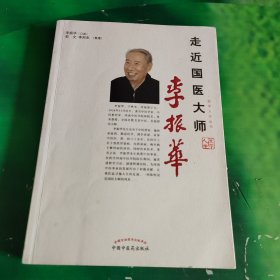
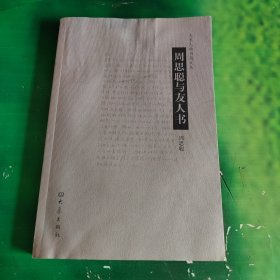
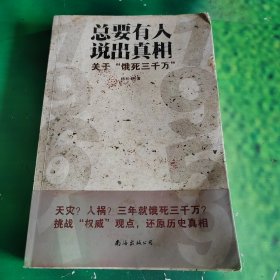

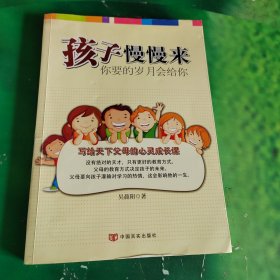
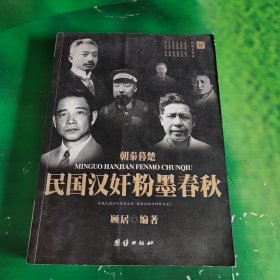
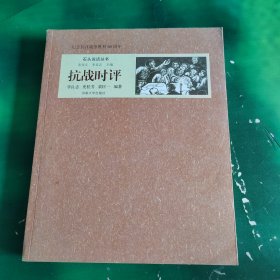




以下为对购买帮助不大的评价